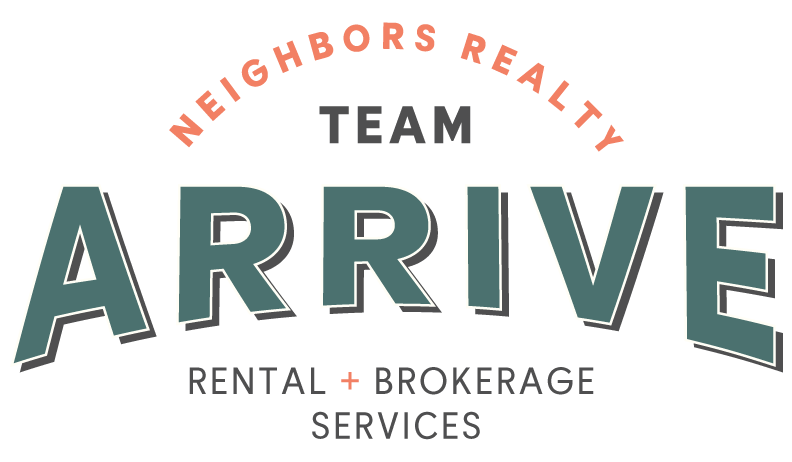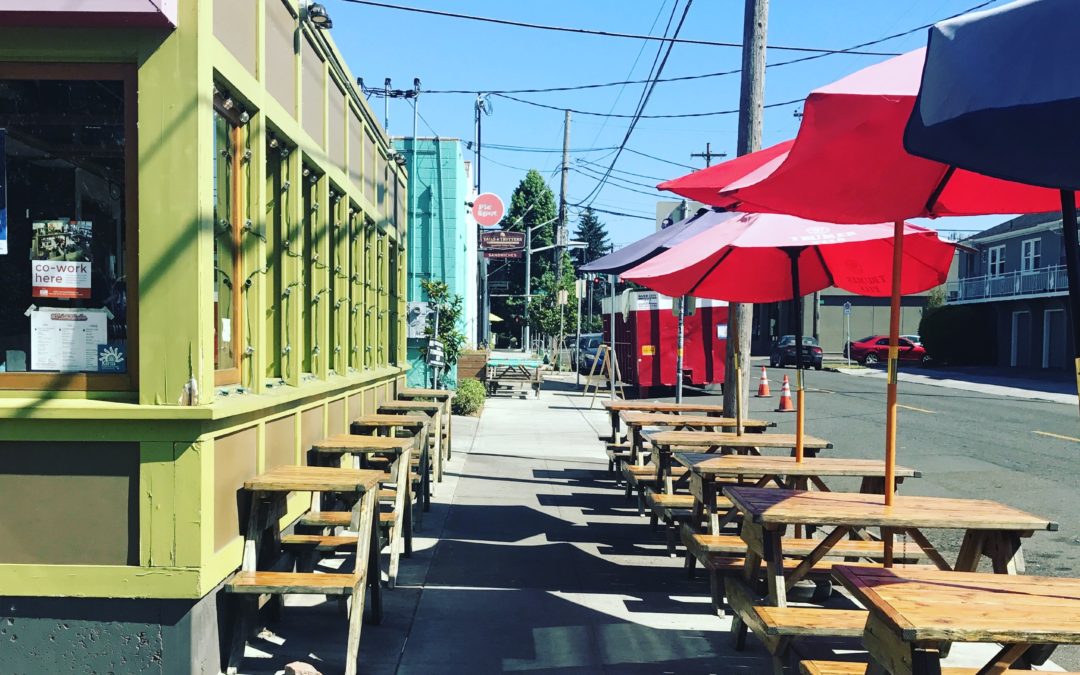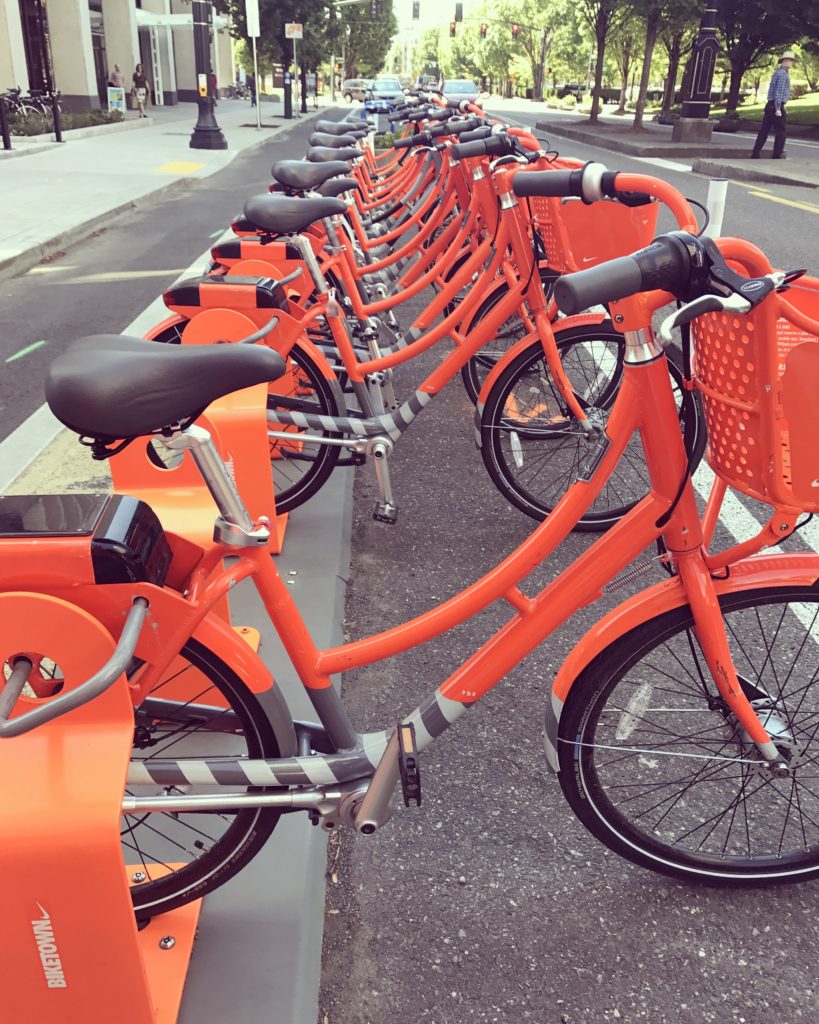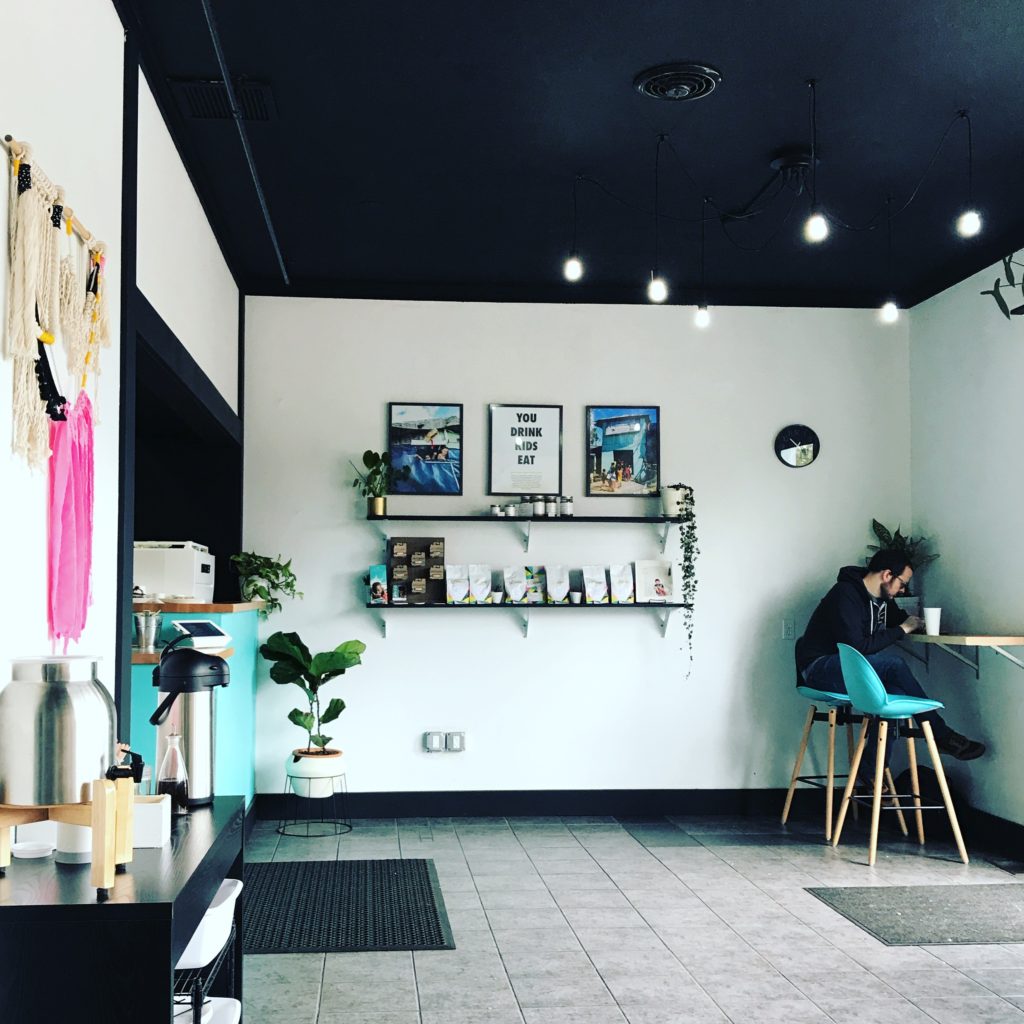Home to Powell’s Books, the Timbers Army and Portland Trailblazers, world-class music festivals, street fairs, farmers markets, and green space for days, Portland has something for everyone. Whether you’re moving to Portland for work, to retire or are looking to live in a city where progressive politics, urban homesteads, and organic food rule the day, welcome! There are some things to know before you arrive that will help you understand how Portland works and give you the lay of the land, so you can better decide where you would like to live, rent or buy when you get here.
Portland Basics
Portland is the largest city in Oregon and the 3rd largest city in the Pacific Northwest after Vancouver and Seattle. The city covers 145 square miles and has an estimated population of 639,863 (and growing). Portland is divided into quadrants. When looking at a map of the city, you’ll see that it sits on either side of the Willamette River (see pronunciation below). The Willamette runs north-south and intersects with the east-west running Columbia River in North Portland (read: confluence). Each quadrant is aptly named for its location. For example, NE Portland (occasionally NEPO), SE Portland (SEPO), etc. Urban neighbors, towns in their own right, include Milwaukie and St. Johns. Suburban neighbors include Happy Valley, Gresham, Oregon City, Beaverton, Aloha, Tigard, Hillsboro and Lake Oswego. Within each quadrant, there are multiple neighborhoods and districts. The city sits on a grid and Burnside Street divides it into North and South while the river divides East and West.
Knowing You
One of the first questions we ask newbies and people relocating from afar to Portland is, what do you like and how do you like to live? It may sound basic, but it’s key to figuring out where to live when moving here (anywhere really). Do you want to live in the city? Do you need a garage? How do you travel, via public transportation, bike or car? Do you want to walk to see a movie or eat out? Do you need privacy? Are you looking for a specific type of house or apartment? How long would you like your commute time to be? It’s all about prioritizing, so you can figure out what will work for you when living in Portland.
Getting Around Portland
Portland has its share of main streets that will connect you with each quadrant and neighborhood around the city. Get to know Martin Luther King, Jr., Grand, Cesar Chavez, Sandy Boulevard, Burnside, Powell, 82nd Avenue, Lombard, Milwaukie, Barbur Boulevard (West), Canyon Road and Beaverton-Hillsdale Highway.
Portland’s east side and downtown are bike-friendly, to say the least. If you drive a car and are unfamiliar with how to share the road with bikes, you may need to study up. Bikes are treated like cars here and accepting this is important. Most streets have bike lanes and there are bike routes all over the city. However, if there is no bike lane, cyclists can and really should take the lane, so as to be seen by drivers. If you’re visiting and would like to try out bike riding in Portland, rent an orange Biketown bike to see what it’s all about. If you like to travel by public transportation, Portland is your town. Tri-Met is easy to navigate with buses, the MAX line, and streetcars. There are color-coded lines traveling all over the city and you can get to the airport without driving. Yay!
Portland Neighborhoods
In recent years, Portland has grown exponentially and with growth, neighborhoods have become distinctly defined according to specific characteristics. Some of the most noted changes have happened in Portland’s core neighborhoods on the east side of the city. Southeast neighborhoods like Hawthorne, Belmont, Division, and Clinton are all within walking or biking distance of each other. While they bare resemblance to each other in some ways, they all have distinct qualities each their own. Hawthorne, for example, is a shopping district long known for vintage furniture stores, a boho vibe, and independently, left-leaning businesses. Division, only a few blocks away has undergone major changes in the last decade and represents a newer Portland with modern apartment buildings and restaurants galore including well-known and nationally acclaimed eateries like Pok Pok and local favorites like Roman Candle and Lauretta Jeans. It takes time to get to know Portland’s neighborhoods, but each one is worth exploring and is part of what draws people to the city.
Here are a few neighborhoods to check out:
Southeast:
Hawthorne
Belmont
Division
Clinton
Foster Powell
Sellwood
West Moreland
Brooklyn
Milwaukie
Tabor
Central Eastside
Northeast:
Hollywood
Laurelhurst
Alberta Arts
Killingsworth
Roseway/Rose City Park
Kerns
North Tabor
Cully/NE 42nd Avenue
North:
Mississippi
Dekum Triangle
Kenton
University Park
St. Johns
Northwest:
21st Shopping District
23rd Avenue
Alphabet District (streets alphabetized starting at Burnside)
The Pearl District
Old Town
Southwest:
Ladd Hill
Goose Hollow
Corbett
Hillsdale
Multnomah Village
Downtown Beaverton
Bethany
Orenco Station
Generally, if you’re looking for walkability in Portland, the core eastside neighborhoods west of 82nd Avenue are for you. Houses built in the early to mid 20th century are prominent, quite close together and privacy is unusual. There are a few pockets, however, like the Cully neighborhood in NE where you’ll find double lots and more space. If you’re looking for ample trees, elevation gains, cul de sacs, and homes built after 1970, head deep east or to the westside.
Weather You Like it or Not
The first rule of fight club… (google this for an insider tip and Portland author reference)…of living in Portland is understanding that talking about the weather isn’t optional. While it may seem like obligatory small talk, you’ll come to learn that it’s daily discussion and depending on where you’re moving from, Portland will either have the best or worst weather ever. Change is rapid, weatherwise, in the Pacific Northwest. It can be sunny one minute and hail the next in spring, can be 40 degrees one day and 70 the next. It’s hard to plan events outside without considering the weather, and summer doesn’t officially start here until July 5th. On beautiful days (there are actually a lot) you’ll feel like you’re holding a baby or kitten and you will try to remember this feeling in the depths of winter. You should have rain gear with a hood (goes without saying). Some people use umbrellas, but they just moved here. And you may as well remove that weather app from your phone because you’re not going to need it.
Portland’s Hipster Miyagis
Much has been said about hipsters in this city. Could be Portlandia’s influence, could be lots of things. Depending on where you are on the age spectrum and where you’re moving from, you may assume all people under 35 are hipsters. In Portland, hipsters might have beards or may know their coffee, fill their growlers with kombucha at the local grocery store and may or may not have a snarky disposition. The general rule of thumb when coming into contact with a hipster is, accept them, they’re just like you, but often hold the keys to the city. Kill them with kindness because they will teach you things. Also, if they’re rude, don’t take it personally, just consider it part of Portland’s charm.
How Do You Say…in Portlandic?
If you’re relocating to Portland and want to fit in, knowing how to pronounce the city’s names is key to sounding like an insider. There will be other difficulties around Oregon and the Pacific Northwest if you’re not from here, you can guarantee it, but here’s a starter in Portland proper.
- Oregon (Perhaps most importantly, you live in Orygun, never Ore-gone)
- Couch Street (looks like Couch pronounced Cooch, after years of living here, we still don’t know why)
- Willamette (Think: Dammit, Willamette)
- Glisan (Even tough Siri refers to it as glisten, it’s Gleason like Jackie)
Portland…AKA
You’ll hear these monikers when referring to Portland. After years of living here, we rarely use them, but you should know them.
- City of Roses
- Stumptown
- P-town
- Rip City
There is so much to learn about Portland. It’s fun and ever-changing with some core characteristics of a northwest city that make it a great place to live. It’s green with parks galore, great food and has an easy going pace. Have a good time, enjoy the city. And check back for updates on specific neighborhoods and more Portland-centric information.



